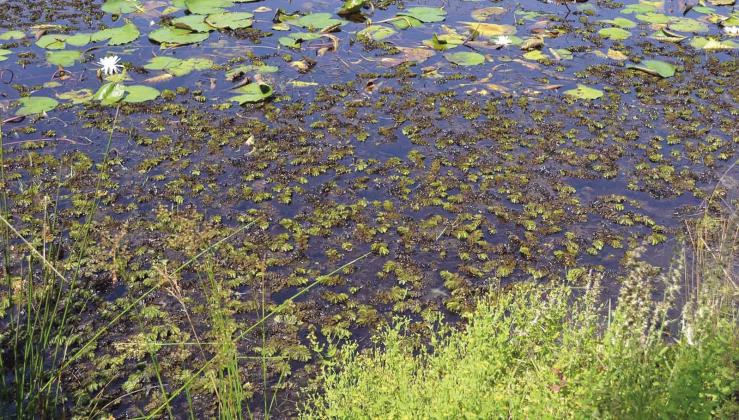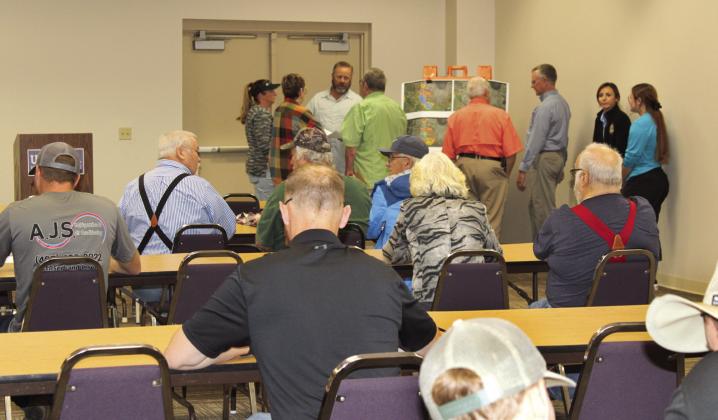The Florida Fish and Wildlife Conservation Commission FWC hosted a well-attended meeting Jan. 16 at Osceola Heritage Park for input from stakeholders and lakeshore residents of the Kissimmee Chain of Lakes.
The topic on everyone’s mind was the choking hydrilla, a nonnative invasive water plant, on Lake Toho, and several other area lakes.
Ed Harris, FWC invasive plant management biologist, spoke to the over 70 attendees, split mainly between anglers and other lake users, and residents living along the shore of Kissimmee’s Lake Tohopekaliga.
“Lake Toho has about 70 percent coverage right now. We have not had any funding for hydrilla spraying or removal in many years, despite requesting contingency funding for the past three years,” said Harris.
FWC receives funding from the Florida legislature, although never in an amount close to the agency’s annual requests. In addition to hydrilla, there are several other non-native invasive species that are an even worse threat to the health of Florida’s lakes, including two types of ferns, Water-hyacinth and Waterprimrose. As funds are received, they are allocated to eradicate the priority invasive plants to prevent them from gaining too much of a hold in the state’s rivers and lake systems, Harris said.
In addition to the lack of funding for FWC, other state and even federal agencies have a say in the management of the lakes, with the South Florida Water Management District responsible for water quality and flood control measures, and the U.S. Army Corps of Engineers exercising jurisdiction over navigable waters anywhere in the country.
Both lake users, such as anglers, waterfowl hunters, and jet skiers, and lakeside residents expressed their frustration with the everincreasing hydrilla. The aquatic herb entangles outboard motor propellers, clogs jet ski motors, and makes large areas of Lake Toho impossible to fish. However, in the past, FWC has heard from anglers that some hydrilla is good.
Property owners are unable to access the lake, plagued by a significant increase in mosquitos, and have concerns for pets and small children confusing the hydrilla mats for dry land. Questions were raised about the quality of water coming into the lake from Shingle Creek, which flows south out of Orange County.
“Hydrilla is good for water clarity, but as an invasive species, it can reach a tipping point in a body of water where it becomes almost impossible to completely remove,” said Harris.
He went on to say that lake shore residents have the right to clear aquatic vegetation by mechanical means along 50 feet or 50% of the shoreline to gain access to lake waters at any time. Permits can be obtained for larger areas or alternative means of removal, and FWC is more than ready to work with residents and homeowner associations, and partner with cities and counties to issue permits.
While a revised lakes plan will be presented to the public in September, if no increased funding is received from this year’s legislative session, little can change.
For more FWC information on aquatic plant removal, see https:// bit.ly/3 RWU4b4.




